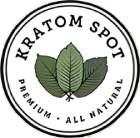
New Kratom consumers can be confused about what kratom does and whether or not kratom is safe. These questions can be complicated, but necessary when evaluating whether or not Kratom is right for you. Independent research is vital to making an informed decision about Kratom, but accurate information can be hard to come by. Let’s take a look at some of the questions new Kratom enthusiasts often have, but first, we’ll take a look at what, exactly, Kratom is.
Southeast Asian Ethnobotanical
What is Kratom? Kratom, known scientifically as the Mitragyna speciosa tree, is an evergreen plant that grows throughout the jungles and rainforests of Southeast Asia. Much of the soil in the area is rich in minerals brought to the surface during the volcanic activity that has created thousands of islands and archipelagos in the region. The result is a biodiverse environment that is perfect for encouraging the production of alkalytic compounds in the Kratom tree that are at the heart of what kratom does.
Kratom’s Role In Indigenous Cultures
The culture of the area where Kratom is grown is largely influenced by the tropical climate of the region. For millennia, humans in these Kratom-rich regions have lived in isolated villages, separated by miles from their nearest neighbors and have been largely self-sustaining, with limited trade outside their immediate area.
While modern Indonesia, Thailand, and Malaysian populations are technologically savvy, well connected, and based around the large metropolises that head these emerging economic powerhouses, the remnants of these generational villages still dot the landscape and still depend on subsistence for survival. Traditionally medicinal plants, like Kratom, do what they can in the absence of modern medicine to keep these villages healthy. For centuries, natives have harvested the leaves of the Kratom plant, chewing it when they need increased focus, relaxation, or relief from the aches of living in a rugged, jungle environment.
What Do The Colors and Countries Mean In Product Descriptions?
The full nomenclature used to differentiate Kratom products can be confusing to new Kratom consumers. Generally speaking, Kratom products are identified by a color, the country or region of origin, and form. These three characteristics let you determine what your Kratom does do:
- Color – This refers to the veins on the harvested Kratom leaves before harvesting. While you may see some fleck of this color remaining in your powder, the color does not refer to the powder itself. “Red vein” tends to denote a concentration of active chemicals that leans more toward 7-hydroxymitragynine, white-veined Kratom varieties shift farther toward mitragynine, and green-veined Kratom leaves tend to be more balanced in concentration.
- Country/Region – While genetically Kratom trees are all Mitragyna speciosa, the country of origin plays an important part in determining what your Kratom does. Different regions show a tendency towards different nutrients in the soil, moisture levels, heat, and sunlight. While the gradients of difference may seem small, they’re vital in establishing the concentrations of active alkaloids in Kratom.
- Form – Kratom is processed and sold in several different forms. These forms vary from Kratom powder to extracts and beyond. Ordering the right form of Kratom for your needs is essential. While the form doesn’t affect what Kratom does, it can change how well it does it.
How Do The Forms Of Kratom Differ?
Generally speaking, safe Kratom is sold in three main forms: powder, extract, and capsules. While these can then be formulated into other products, such as bath bombs, they generally start as one of these three forms:
- Kratom Powder – This is the dried and ground leaves of the Kratom tree. The closest to its natural form, Kratom powder is ready faster, so it ships fresher than other forms. Many people choose it as it is the closest commonly available form to the plant’s natural state.
- Kratom Extract – If you want to maximize what your Kratom does, Kratom extracts are a great choice. By using a solvent to extract the active compounds from inactive material, you get a more powerful substance per volume.
- Kratom Capsules – Capsules can be filled with powder, extract, or a blend of the two. These allow anyone to use a set, known amount of material and are perfect for on-the-go exploration.
Why Can’t A Supplier Tell Me What Does Kratom Do?
In the United States, the Food and Drug Administration is charged with regulating Kratom. It is not recognized as a food, drug, or supplement, so it cannot be marketed or sold for human consumption. That’s why independent research, based on both the limited studies that have been done and anecdotal reports from other people who have chosen Kratom, is so important. The FDA has not approved companies to say Kratom is safe or make specific health claims about it. Companies that violate these rules face stiff fines and penalties.
What Can I Do To Keep Kratom Legal And Make It More Accessible For Responsible Adults?
Advocate for Kratom. Organizations like the American Kratom Association have excellent resources available and chapters in many states to help organize actions efforts at the local, regional, and national level. Call your legislators and speak openly, honestly, and passionately about what Kraton does for you, and your desire that they protect your right to access a legal supply of Kratom that is safe and regulated appropriately. Public pressure can work (just look at the recent reversal of the Thailand Kratom ban!), and your voice deserves to be heard.
Premium Kratom Products
At Kratom Spot, we’re proud to bring you the best Kratom on the market. If you have any questions about our products, call our customer service department, and order your high-quality Kratom from Kratom Spot today.


